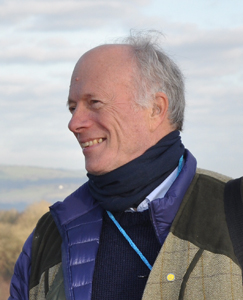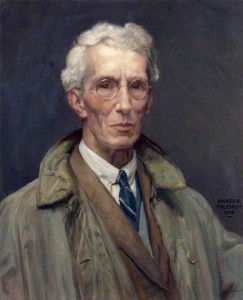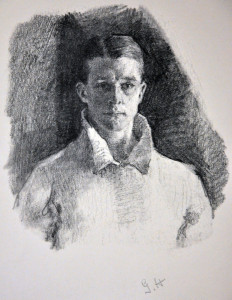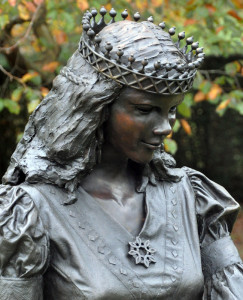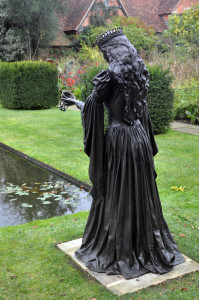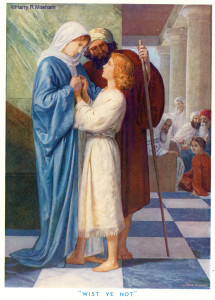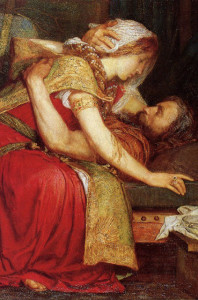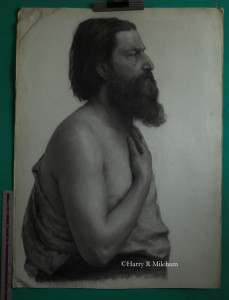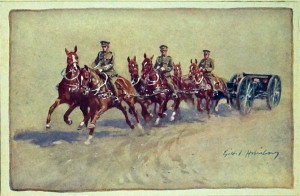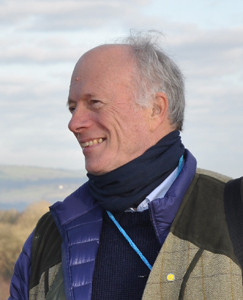Robert Mileham A.F.A.S.
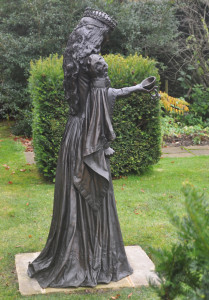
Why do I sculpt? I simply love it. I just have to recreate life as I see it.
I caught sculpture at a turning point in my life. It was infectious, demanding, selfish and totally compulsive. Professionally, it has become my raison d’être. Sculpture is in our time and place. It exists; it is more than an image. You should engage with it, touch it and see it from all angles. It has the advantage of presence.
I was always good at drawing and as a child I got a lot of pleasure from making things from Plasticine. After A level Art I was not encouraged to pursue it as a career but followed my father and brother into the army. This was followed by some time in business.
More than half my work takes the human form as its subject. I started sculpture in the traditional way, with life classes. Most of my grandfather’s work was based on the human form and his classical training must have had an influence on me from a very early age. I am mainly self-taught. I am fascinated and intrigued by the variety of the human form. The hands, feet and especially the face, are the most exciting to sculpt. For me, feet depict tension and sensuality; hands reveal age and beauty but a face can conceal and reveal life, spirit and personality.
The rest of my works have been largely animals. It is enormously rewarding to be able to capture the spirit of a living thing in a bronze or terracotta. I enjoy the challenge of adding movement too and I have not yet grown out of trying to do the most difficult of poses.
Much of my work is commissioned in bronze, a wonderfully versatile medium. Carved marble set the renaissance alight but bronze compliments it. Marble has translucence and radiance but bronze renders a greater spectrum of colour (Patina) and crispness for detail in any size or form. After many visits to the V&A, I have been attracted back to Terra Cotta. Demand for a portrait bust in Parian Ware has given me the incentive to reinvent this fantastic medium.
Harry R Mileham (1873-1957) was born in Kent and lived and worked there, in London and later in Sussex.
He was educated at Dulwich College and then in the Lambeth School of Art from where he entered, as a student in 1892, the Royal Academy Schools. There he attended Classes supervised by a host of Academicians amount them, Fredrick Leighton, Edward Poynter, Frank Dicksee, Lawrence Alma-Tadema, George Clausen, Luke Fildes, W.Q. Orchardson, A.C. Gow and W.F. Yeames.
His fellow students, with whom he remained friends for many years, reads again like a list from who’s who of Victorian Artists: H.M.Brock, Arthur Rackham, George Spenser Watson, Henry Poole, Bertrum Pegram, John Byham Shaw, Evelyn Pyke-Nott, Charles Sims, A.J. Walker and Frank O. Salisbury, Harold Speed and Thomas Sturgeon Moore.
Harry was awarded at the end of his three year term the top prize of gold Medal and Travelling Studentship which lasted some fifteen months, much of it in Italy.
His prestigious training and early promise blossomed into some masterful works which have been exhibited largely in his son’s and grandchildren’s homes, The Royal Navy at Plymouth, St. Peter Mancroft in Norwich, the Chapel Royal in Brighton and countless cathedrals, churches, Hospitals, Libraries and Public Schools.
Many works were of religious, historical or illustrations from literature for example, The Pardonner’s Prologue (Chaucer), Tristram’s Deathbed, Pied Piper of Hamelin and Christmas at Dingley Dell (Dickens). The Stations of the Cross painted for St. Thomas’s Hove is a wonderfully sensitive set of superbly painted works and a huge project. He also painted a number of nudes, Nymph of Artemis being of particular note. His life drawings show him to have been an amazingly skilful draftsman with a very good understanding of the human form.
The family launched an exhibition of his works in Leighton House in 1995 to celebrate the hundredth anniversary of his gold Medal. His life and works are now well documented and I thank my brother Patrick Mileham for much of the detail above.
Gilbert Holiday ranks with Sir Alfred Munnings, Lionel Edwards and Snaffles as one of the truly great equestrian artists of the 20th century or indeed of any other century. He was better perhaps than anyone for capturing the movement of horses and more precisely the ‘atmosphere’ they generated. His personal history is quite fascinating and yes heroic. He lied about his age to join up for the First World War and his adventures in it are breathtaking. I have had the privilege to see his sketch books and scrap books still owned by the family. His skill was quite remarkable and the lines that Snaffles wrote below only scratch the surface in describing the work I have seen.
“In my humble opinion his gun teams were his greatest achievement. They are beyond criticism by art critic or soldier- which is saying a lot. The former will always find the composition and grouping of horses very pleasing, and the latter’s eye, immediately searching for faults in equipment or military correctness, finds nothing but admiration for his knowledge and execution. How wonderfully his horses are represented, their ears and eyes so full of expression and movement; their body muscles heaving under skins in the ‘pink’ of condition, and their legs and feet working with perfectly natural timing as they swing along at either a gallop or a trot. If we look into the sketches we see how wonderfully he has depicted the harness and tack, the traces all taking a level strain without appearing too stiff and hard, the saddles and bridles all in beautifully supple and clean condition, and all this obtained by a few smudges of charcoal with the highlights flecked out with a stump of rubber.”
Gilbert’s mother Adela, (nee Mileham) Lady Holiday was Harry Mileham’s aunt. She was a very accomplished artist in her own right. Gilbert’s uncle, Henry Holiday RA is best known for his painting of Dante and Beatrice at the Walker Gallery. It is hardly surprising therefore that GH should show such talent. Gilbert was Harry R Mileham’s first cousin.
With thanks to his grand daughters and William Marler for some of the above.

